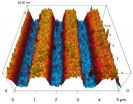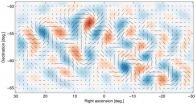(Press-News.org) Farmers in Africa can increase their food production if they avoid over dependence on chemical fertilizers, pesticides and practice agricultural intensification - growing more food on the same amount of land – using natural and resource-conserving approaches such as agroforestry.
According to scientists at the World Agroforestry Centre (ICRAF), crop production in Africa is seriously hampered by the degradation of soil fertility, water and biodiversity resources. Currently, yields for important cereals such as maize have stagnated at 1 tone per hectare. Climate change and increasing demand for food, animal fodder and fuel is likely to worsen the situation.
To meet the needs of an ever growing population, scientists say farmers can increase production and conserve natural resources by turning to agricultural intensification through agroforestry, an integrated land use management technique that incorporates trees and shrubs with crops and livestock on farms.
This approach brings ecosystems, livelihoods and agriculture together. Replenishing soils, improving biodiversity and lessening agricultural pollution. It also decreases threats to food security and earned farming incomes - according to Sammy Carsan, a tree domestication scientist with ICRAF and lead author of a recent article on agroforestry and agricultural intensification.
In many parts of Asia, intensification has been achieved through the use of greater inputs such as chemical fertilizers, but it has come at a cost – causing soil degradation, loss of biodiversity and pollution which has impacted on food security and income earned from farming.
While growing more food on the same area of land is key to increasing sustainable food production and meeting the needs of an ever-growing population, farmers should avoid intensification that relies on heavy use of chemical fertilizers and pesticides. Chemical fertilizers increase production in the short-term, but with time soils become increasingly degraded and broken down until there is very little organic matter or nutrients left. When soils are in this state, crops are unable to utilize the fertilizer and production is low.
"A long-term solution to intensification in Africa should not purely be based on an imported intensification model but instead consider approaches that can maintain the quality of the available resource base through ensuring nutrient cycling, organic matter build-up, biodiversity improvements and water quality regulation," says Carsan,
Agroforestry practices provide appropriate technologies for maintaining resilient farms and ecosystems that make up the landscapes that provide food and livelihoods across rural Africa.
INFORMATION: END
Crop intensification and organic fertilizers can be a long-term solution to perennial food shortages in Africa
Growing more food on the same size of land is key to increasing food production in Africa to meet the needs of an ever-growing population
2014-03-18
ELSE PRESS RELEASES FROM THIS DATE:
Researchers change coercivity of material by patterning surface
2014-03-18
Researchers from North Carolina State University have found a way to reduce the coercivity of nickel ferrite (NFO) thin films by as much as 80 percent by patterning the surface of the material, opening the door to more energy efficient high-frequency electronics, such as sensors, microwave devices and antennas.
"This technique reduces coercivity, which will allow devices to operate more efficiently, reducing energy use and improving device performance," says Goran Rasic, a Ph.D. student at NC State and lead author of a paper describing the work. "We did this work on NFO ...
New research links body clocks to chronic lung diseases
2014-03-18
The body clock's natural rhythm could be utilized to improve current therapies to delay the onset of chronic lung diseases.
Scientists at The University of Manchester have discovered a rhythmic defence pathway in the lung controlled by our body clocks, which is essential to combat daily exposure to toxins and pollutants.
Internal biological timers (circadian clocks) are found in almost all living things driving diverse processes such as sleep/wake cycles in humans to leaf movement in plants. In mammals including humans, circadian clocks are found in most cells and ...
Earthquakes caused by clogged magma a warning sign of eruption, study shows
2014-03-18
New research in Geophysical Research Letters examines earthquake swarms caused by mounting volcanic pressure which may signal an imminent eruption. The research team studied Augustine Volcano in Alaska which erupted in 2006 and found that precursory earthquakes were caused by a block in the lava flow.
36 hours before the first magmatic explosions, a swarm of 54 earthquakes was detected across the 13-station seismic network on Augustine Island. By analyzing the resulting seismic waves, the authors found that the earthquakes were being triggered from sources within the ...
Eat more, die young: Why eating a diet very low in nutrients can extend lifespan
2014-03-18
A new evolutionary theory in BioEssays claims that consuming a diet very low in nutrients can extend lifespan in laboratory animals, a finding which could hold clues to promoting healthier ageing in humans.
Scientists have known for decades that severely restricted food intake reduces the incidence of diseases of old age, such as cancer, and increases lifespan.
"This effect has been demonstrated in laboratories around the world, in species ranging from yeast to flies to mice. There is also some evidence that it occurs in primates," says lead author, Dr Margo Adler, ...
Follow the ant trail for drug design
2014-03-18
This news release is available in German. The path to developing new drugs is a long one. If a target is identified for a new active agent – for instance a particular protein that plays a key role in a disease – an active molecule that binds to the target must then be developed. Pharmaceutical companies trawl through their collections of chemicals for substances that act on the target protein in the desired fashion. However, these compounds are often just the starting point for a long process of adjustment and testing. Chemists use computer simulations to design new ...
Democrats, Republicans see each other as mindless -- unless they pose a threat
2014-03-18
We are less likely to humanize members of groups we don't belong to—except, under some circumstances, when it comes to members of the opposite political party. A study by researchers at New York University and Harvard Business School suggests that we are more prone to view members of the opposite political party as human if we view those individuals as threatening.
"It's hardly surprising that we dehumanize those who are not part of our groups," says Jay Van Bavel, an assistant professor in NYU's Department of Psychology and one of the study's co-authors. "However, what ...
Research on the protein gp41 could help towards designing future vaccinations against HIV
2014-03-18
This news release is available in Spanish. Researchers from the University of Granada have discovered, for the first time, an allosteric interaction (that is, a regulation mechanism whereby enzymes can be activated or de-activated) between this protein, which forms part of the sheath of the Human Immunodeficiency Virus (HIV) and the antibody 2F5 (FAB), a potent virus neutralizer. This important scientific breakthrough could help specialists to understand the mechanisms behind generating immune responses and help towards the design of future vaccines against the HIV ...
First direct evidence of cosmic inflation
2014-03-18
Almost 14 billion years ago, the universe we inhabit burst into existence in an extraordinary event that initiated the Big Bang. In the first fleeting fraction of a second, the universe expanded exponentially, stretching far beyond the view of our best telescopes. All this, of course, was just theory.
Researchers from the BICEP2 collaboration today announced the first direct evidence for this cosmic inflation. Their data also represent the first images of gravitational waves, or ripples in space-time. These waves have been described as the "first tremors of the Big Bang." ...
Immunologists present improved mass spectrometric method for proteomic analyses
2014-03-18
When it comes to analyzing cell components or body fluids or developing new medications, there is no way around mass spectrometry. Mass spectrometry is a highly sensitive method of measurement that has been used for many years for the analysis of chemical and biological materials. Scientists at the Institute of Immunology of the University Medical Center of Johannes Gutenberg University Mainz (JGU) have now significantly improved this analytical method that is widely employed within their field. They have also developed a software program for the integrated analysis of ...
UNH research: Positive memories of exercise spur future workouts
2014-03-18
DURHAM, N.H. – Getting motivated to exercise can be a challenge, but new research from the University of New Hampshire shows that simply remembering a positive memory about exercise may be just what it takes to get on the treadmill. This is the first study to explore how positive memories can influence future workouts.
"This study underscores the power of memory's directive influence in a new domain with practical applications: exercise behaviors. These results provide the first experimental evidence that autobiographical memory activation can be an effective tool in ...
LAST 30 PRESS RELEASES:
Tracing the quick synthesis of an industrially important catalyst
New software sheds light on cancer’s hidden genetic networks
UT Health San Antonio awarded $3 million in CPRIT grants to bolster cancer research and prevention efforts in South Texas
Third symposium spotlights global challenge of new contaminants in China’s fight against pollution
From straw to soil harmony: International team reveals how biochar supercharges carbon-smart farming
Myeloma: How AI is redrawing the map of cancer care
Manhattan E. Charurat, Ph.D., MHS invested as the Homer and Martha Gudelsky Distinguished Professor in Medicine at the University of Maryland School of Medicine
Insilico Medicine’s Pharma.AI Q4 Winter Launch Recap: Revolutionizing drug discovery with cutting-edge AI innovations, accelerating the path to pharmaceutical superintelligence
Nanoplastics have diet-dependent impacts on digestive system health
Brain neuron death occurs throughout life and increases with age, a natural human protein drug may halt neuron death in Alzheimer’s disease
SPIE and CLP announce the recipients of the 2025 Advanced Photonics Young Innovator Award
Lessons from the Caldor Fire’s Christmas Valley ‘Miracle’
Ant societies rose by trading individual protection for collective power
Research reveals how ancient viral DNA shapes early embryonic development
A molecular gatekeeper that controls protein synthesis
New ‘cloaking device’ concept to shield sensitive tech from magnetic fields
Researchers show impact of mountain building and climate change on alpine biodiversity
Study models the transition from Neanderthals to modern humans in Europe
University of Phoenix College of Doctoral Studies releases white paper on AI-driven skilling to reduce burnout and restore worker autonomy
AIs fail at the game of visual “telephone”
The levers for a sustainable food system
Potential changes in US homelessness by ending federal support for housing first programs
Vulnerability of large language models to prompt injection when providing medical advice
Researchers develop new system for high-energy-density, long-life, multi-electron transfer bromine-based flow batteries
Ending federal support for housing first programs could increase U.S. homelessness by 5% in one year, new JAMA study finds
New research uncovers molecular ‘safety switch’ shielding cancers from immune attack
Bacteria resisting viral infection can still sink carbon to ocean floor
Younger biological age may increase depression risk in older women during COVID-19
Bharat Innovates 2026 National Basecamp Showcases India’s Most Promising Deep-Tech Ventures
Here’s what determines whether your income level rises or falls
[Press-News.org] Crop intensification and organic fertilizers can be a long-term solution to perennial food shortages in AfricaGrowing more food on the same size of land is key to increasing food production in Africa to meet the needs of an ever-growing population



